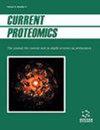Machine Learning-based Virtual Screening Strategy Reveals Some Natural Compounds As Potential PAK4 Inhibitors In Triple Negative Breast Cancer
IF 0.5
4区 生物学
Q4 BIOCHEMICAL RESEARCH METHODS
引用次数: 6
Abstract
P-21 activating kinase 4 (PAK4) is implicated in poor prognosis of many cancers, especially in the progression of Triple Negative Breast Cancer (TNBC). The present study was aimed at designing some potential drug candidates as PAK4 inhibitors for breast cancer therapy. This study aimed to finding novel inhibitors of PAK4 from natural compounds using computational approach. An e-pharmacophore model was developed from docked PAK4-coligand complex and used to screen over a thousand natural compounds downloaded from BIOFACQUIM and NPASS databases to match a minimum of 5 sites for selected (ADDDHRR) hypothesis. The robustness of the virtual screening method was accessed by well-established methods including EF, ROC, BEDROC, AUAC, and the RIE. Compounds with fitness score greater than one were filtered by applying molecular docking (HTVS, SP, XP and Induced fit docking) and ADME prediction. Using Machine learningbased approach QSAR model was generated using Automated QSAR. The computed top model kpls_des_17 (R2= 0.8028, RMSE = 0.4884 and Q2 = 0.7661) was used to predict the pIC50 of the lead compounds. Internal and external validations were accessed to determine the predictive quality of the model. Finally the binding free energy calculation was computed. The robustness/predictive quality of the models were affirmed. The hits had better binding affinity than the reference drug and interacted with key amino acids for PAK4 inhibition. Overall, the present analysis yielded three potential inhibitors that are predicted to bind with PAK4 better than reference drug tamoxifen. The three potent novel inhibitors vitexin, emodin and ziganein recorded IFD score of -621.97 kcal/mol, -616.31 kcal/mol and -614.95 kcal/mol, respectively while showing moderation for ADME properties and inhibition constant. It is expected that the findings reported in this study may provide insight for designing effective and less toxic PAK4 inhibitors for triple negative breast cancer.

基于机器学习的虚拟筛选策略揭示了一些天然化合物作为三阴性乳腺癌中潜在的PAK4抑制剂
P-21活化激酶4 (PAK4)与许多癌症的不良预后有关,特别是在三阴性乳腺癌(TNBC)的进展中。本研究旨在设计一些潜在的候选药物作为PAK4抑制剂用于乳腺癌治疗。本研究旨在利用计算方法从天然化合物中寻找新的PAK4抑制剂。从对接的pak4 -配体复合物中开发了一个电子药效团模型,并用于筛选从BIOFACQUIM和NPASS数据库下载的一千多种天然化合物,以匹配至少5个位点的选择(ADDDHRR)假设。通过EF、ROC、BEDROC、AUAC和RIE等完善的方法来评估虚拟筛选方法的稳健性。通过分子对接(HTVS、SP、XP和诱导契合对接)和ADME预测筛选适合度评分大于1的化合物。采用基于机器学习的方法,利用自动QSAR生成QSAR模型。利用计算top模型kpls_des_17 (R2= 0.8028,RMSE = 0.4884, Q2 = 0.7661)预测先导化合物的pIC50。通过内部和外部验证来确定模型的预测质量。最后进行了束缚自由能的计算。验证了模型的稳健性/预测性。与参比药物相比,这些hit具有更好的结合亲和力,并与关键氨基酸相互作用抑制PAK4。总的来说,目前的分析得出了三种潜在的抑制剂,预计它们与PAK4的结合比参比药物他莫昔芬更好。三种有效的新型抑制剂黄荆素、大黄素和紫荆素的IFD评分分别为-621.97 kcal/mol、-616.31 kcal/mol和-614.95 kcal/mol,对ADME性能和抑制常数均有一定的调节作用。本研究结果有望为设计有效且毒性较低的pak4抑制剂治疗三阴性乳腺癌提供新思路。
本文章由计算机程序翻译,如有差异,请以英文原文为准。
求助全文
约1分钟内获得全文
求助全文
来源期刊

Current Proteomics
BIOCHEMICAL RESEARCH METHODS-BIOCHEMISTRY & MOLECULAR BIOLOGY
CiteScore
1.60
自引率
0.00%
发文量
25
审稿时长
>0 weeks
期刊介绍:
Research in the emerging field of proteomics is growing at an extremely rapid rate. The principal aim of Current Proteomics is to publish well-timed in-depth/mini review articles in this fast-expanding area on topics relevant and significant to the development of proteomics. Current Proteomics is an essential journal for everyone involved in proteomics and related fields in both academia and industry.
Current Proteomics publishes in-depth/mini review articles in all aspects of the fast-expanding field of proteomics. All areas of proteomics are covered together with the methodology, software, databases, technological advances and applications of proteomics, including functional proteomics. Diverse technologies covered include but are not limited to:
Protein separation and characterization techniques
2-D gel electrophoresis and image analysis
Techniques for protein expression profiling including mass spectrometry-based methods and algorithms for correlative database searching
Determination of co-translational and post- translational modification of proteins
Protein/peptide microarrays
Biomolecular interaction analysis
Analysis of protein complexes
Yeast two-hybrid projects
Protein-protein interaction (protein interactome) pathways and cell signaling networks
Systems biology
Proteome informatics (bioinformatics)
Knowledge integration and management tools
High-throughput protein structural studies (using mass spectrometry, nuclear magnetic resonance and X-ray crystallography)
High-throughput computational methods for protein 3-D structure as well as function determination
Robotics, nanotechnology, and microfluidics.
 求助内容:
求助内容: 应助结果提醒方式:
应助结果提醒方式:


